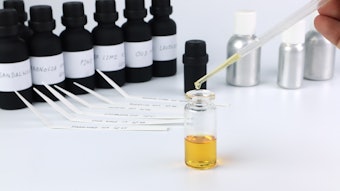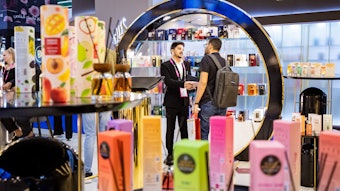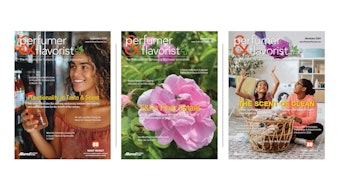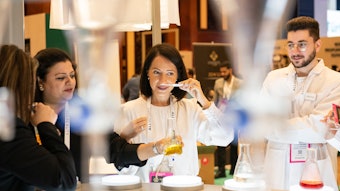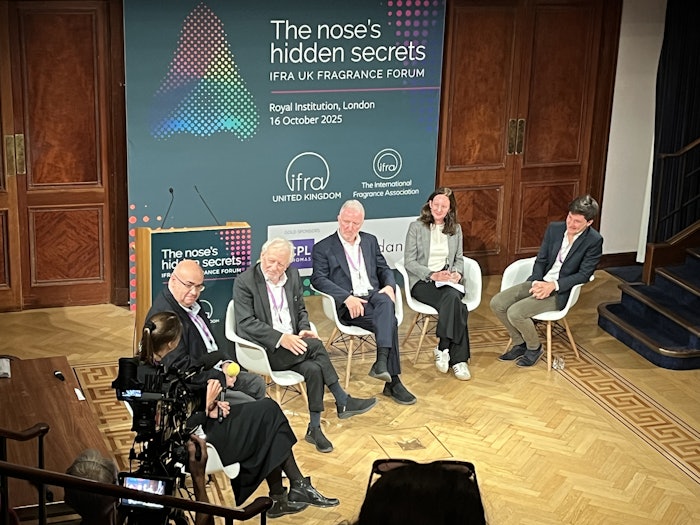
As I have been focussed recently on the beauty industry’s interest in the skin microbiome, it was really interesting for me to attend the IFRA Fragrance Forum on Jane Evison, European correspondent for Perfumer & Flavorist+Photo by Jane Evison
Jane Evison, European correspondent for Perfumer & Flavorist+Photo by Jane Evison
In his introduction to the morning session, Chair Professor Stuart Firestein recognised the Royal Institution’s mission as being ‘the diffusion of knowledge’. The RI is the location of popular public scientific presentations that were established by Sir Humphry Davy in the early 1800s and still continue today, as well as being the site of the first one-way street in the UK due to the traffic issues arising, and where the writer S T Coleridge went ‘to get new metaphors’.
Enough of the history! World-leading experts in olfaction and the nasal microbiome were gathered to showcase emerging research that expands our understanding around our nasal microbiome and its role in our lives, according to IFRA UK. This event explored the impact of its influence on smell, health and emotion in individuals, as well as at population level in a specific community in West Papua and a student community in the Seattle area of the USA.
In her welcome address, Lisa Hipgrave, Director of IFRA UK said: “The increased scientific and consumer interest in our gut microbiome and its impact on our overall health and wellbeing got us thinking about the impact of our nasal microbiome when we were planning this year’s IFRA Fragrance Forum. The findings from this exciting area of emerging research could open up new avenues for microbiome-informed approaches in fragrance design, diagnostics, and therapy, highlighting the nasal microbiome as a key player at the intersection of immunity, sensory experience, and wellbeing. We are delighted to have brought together such wonderful speakers to share their fascinating work with us today – I am sure it will be influencing us for years to come.”
Professor Ghislain Schyns set the scene for the day with his talk ‘Scents of self: nasal microbiome influences on smell, health and emotion’. Professor Schyns is Senior Principal Scientist, Microbiome and Hygiene at dsm-firmenich, as well as Professor of Industrial Microbiology at the University of Amsterdam. Professor Schyns explained: “A central theme emerging in research today is the nose-brain axis, the connection between the nasal microbiome and brain functions. This has different implications for fragrance perception and emotional wellbeing.”
Dr Gabriel Lepousez, from the Institut Pasteur in France, introduced the relationship of the microbiota-gut-brain axis in his talk, ‘The nasal microbiota-brain axis and its implication in brain disorders’. Growing evidence implicates bacterial populations in the nasal cavity as a neglected but important factor in the physiology of the olfactory system, as well as in the development of certain brain diseases. Building on previous work on the role of the microbiota–gut–brain axis in mood disorders, Dr Lepousez presented recent clinical and preclinical data illustrating how the nasal microbiota could serve as a novel diagnostic tool and may play a critical role in the development of neurodegenerative processes, with a particular focus on Parkinson’s disease from studies conducted in Guadeloupe and Paris.
 Photo by Jane Evison
Photo by Jane Evison
In a presentation added to the programme at short notice, a video-link connected the audience with two USA-based researchers, Lab Director, Gregory Bratman and Graduate Student, Connor Lashus of the University of Washington’s Environment and Well-being Laboratory. They discussed their work to evaluate contact with nature’s impact on mental health and the role of the olfactory pathway, covered initially in their paper in ScienceAdvances (May 2024 Vol 10 Issue 20). Further details of their current studies can be obtained by contacting [email protected].
After a networking lunch, Dr Agnieszka Sorokowska, Associate Professor at the Institute of Psychology, University of Wroclaw discussed ‘Linking sensory performance and microbial ecology: Olfaction and the nasal microbiome in West Papua’. Dr Sorokowska researched how sensory engagement with biodiverse surroundings may serve as a form of natural ‘olfactory training’. She investigated olfactory performance and the nasal microbiome in the remote West Papuan highlands, a setting that offers marked variation in lifestyle and environmental exposure. It is hoped the results will stimulate discussion on the role of environmental factors in shaping sensory performance and microbial ecology and illustrate how insights from a single population can broaden our understanding of the human nasal microbiome. She acknowledged that this is a ‘work in progress’ and more detailed research and data is needed.
Led by Professor Barry Smith, the concluding session focussed on wine and wine-tasting as a complex multi-sensorial experience. Victoria Moore, wine editor for the Daily Telegraph newspaper and speaker Dr Gabriel Lepousez, who is himself a wine expert, gave their own insights into this world, followed by a final panel discussion with all the speakers. IFRA UK chairman David Whitaker gave the vote of thanks to all the speakers and sponsors EFF, Givaudan and CPL Aromas for a fascinating day.


